Have you ever tried to add a pinch of something special to your dishes, like a salty tang? If your answer is yes, than sea salt flakes are for you.
Sea salt flakes are an extremely versatile ingredient that adds a wonderful flavor to food and can be used in many dishes from salads to desserts.
But how can it be substituted? Here we will discuss five substitutions for sea salt flakes that you can use in the kitchen: table salt, pink Himalayan salt, garlic salt, smoked sea salts, and celery salts.
So go ahead and try any one of these amazing options in your kitchen experiments.
What is Sea Salt Flake?

Sea Salt Flakes, also known as Finishing Sea Salt, are a popular choice for seasoning and garnish amongst chefs.
These imported salt crystals have unique flavors that are a great way to add something special to your culinary dishes.
But what exactly is Sea Salt Flakes, and how should you use it? Read on to find out more about the qualities and benefits of this type of salt, along with the top 5 substitutes for Sea Salt Flakes.
Sea Salt Flakes are handmade by hand-harvesting dried salt ponds or evaporated ocean water.
This production method produces large sea salt crystals which tend to be softer, flaky and lighter than other types of coarsely ground salts such as table salt or kosher salt.
These crystals dissolve quickly in water which makes them ideal for use in cooking and seasoning food before cooking.
The flavor of Sea Salt Flakes varies depending on their origin – Black Lava Flake is one type which has a robust flavor with notes of smokiness due to its volcanic origin; The Murray River Flake is pinkish-white in color with a milder flavor profile; Alder Wood Smoked Flake comes from sustainable British woodlands giving it an earthy smoked taste; And finally Celtic Grey Flake harvested in Brittany has a more intense salinity compared to other types due to it’s popularity in Europe as a finishing touch for various meals from fish & chips to steak.
The 5 Best Substitutes for Sea Salt Flakes
For those who may not be able to find this type of salt, here are five substitutes for sea salt flakes that you can use in your favorite recipes.
Here are the 5 best substitutes for sea salt flakes, along with their characteristics and proper ratios:
| Substitute | Characteristics | Proper Ratio |
|---|---|---|
| Kosher Salt | Coarse texture, mild flavor, versatile in cooking | Use the same amount as sea salt flakes |
| Himalayan Pink Salt | Mineral-rich, subtle earthy flavor | Use the same amount as sea salt flakes |
| Fleur de Sel | Delicate texture, briny taste, enhances flavors | Use the same amount as sea salt flakes |
| Smoked Salt | Adds smoky flavor, enhances grilled or roasted dishes | Use the same amount as sea salt flakes |
| Cayenne Pepper Salt | Spicy kick, adds heat and flavor to dishes | Use in moderation, based on personal preference |
These substitutes can be used to add flavor and seasoning in place of sea salt flakes, depending on your preference and the desired taste profile of your dish. Here’s a detailed look at each substitute:
1 – Kosher Salt
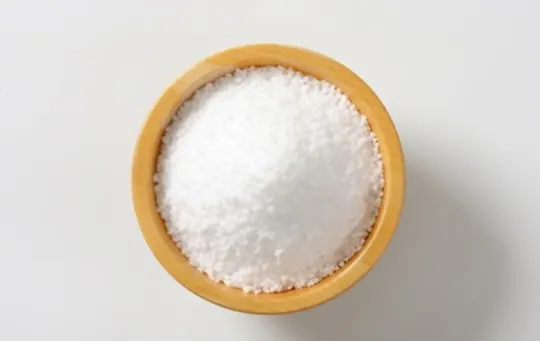
Kosher salt can be a great alternative to sea salt flakes.
It has a slightly different flavor and is finer in texture than traditional table salt.
However, it is still made from sodium chloride, so you won’t be missing out on any essential trace minerals.
Kosher salt doesn’t have the added sodium like other table salts and is one of the purest forms of sodium chloride available on the market.
While it does contain fewer minerals, it does have a larger flake size which will give your food an increase in texture and complexity like sea salt flakes would.
Additionally, it also dissolves faster than traditional table salts due to its flake size.
Therefore, if you’re looking for that crunchy texture but with a quicker dissolve, consider using kosher salt as a substitution for sea salt flakes.
2 – Himalayan Pink Salt
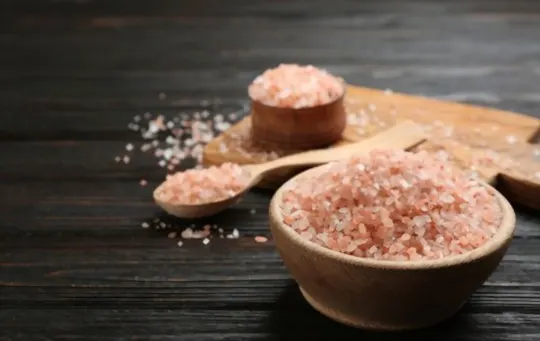
Second on the list is Himalayan pink salt.
This type of salt typically contains several trace minerals, including potassium, magnesium and iron.
It’s a popular choice for seasoning dishes due to its mild flavor — and you don’t have to worry about too much iodine in your diet either.
If you’re looking for an alternative to sea salt flakes with similar color, texture and taste but with fewer impurities than ordinary table salt, then this might be just what you’re looking for.
India’s famed Taj Mahal is tiled with Himalayan pink salt blocks and some claim the air surrounding this building has therapeutic effects.
Keep in mind though that the taste of Himalayan pink salt is a bit less salty than that of sea salt flakes.
3 – Fleur de Sel

Fleur de Sel is a French salt flake that often gets mistaken for sea salt.
While Fleur de Sel does come from the ocean, it is made in a different way than traditional sea salt.
Fleur de Sel is produced by harvesting crystallized salt from the top surface of salt ponds using traditional wooden implements.
The top layer, which consists of only the finest and most delicate crystals, is called “Fleur de Sel” or “flower of salt” because of its slight blossom shape.
The flavor of Fleur de Sel is more mellow than conventional table salts and has a slight sweetness to it due to its high mineral content.
It has an added benefit of being more easily digestible as it contains less sodium chloride than regular table salts.
This makes it an excellent option for those looking for a lower-sodium alternative to regular Salts.
Due to its delicacy and fragility, Fleur de Sel cannot be used in place of sea salts for any cooking purpose and should be used for finishing dishes only.
Additionally, due to its cost per ounce, using this type of flake in place of other alternatives may not be economically feasible when compared with the options listed below.
4 – Smoked Salt
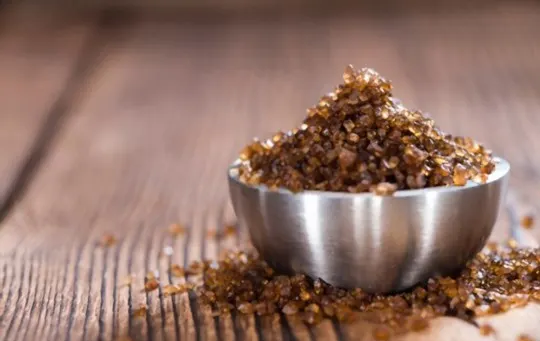
Smoked salt is made by slowly smoking salt over low heat using hardwood sawdust such as oak, hickory, or pecan.
The result of this process is a dark grey-brown colored salt that has a distinctive smoky flavor and aroma.
It has slightly more sodium than regular sea salt flakes, so it should be used sparingly to avoid over seasoning your dishes.
Smoked salt is ideal for adding an extra layer of flavor to smoked meats, roasted vegetables, salads, and more.
It also works well as a finishing touch for grilled dishes and sauces.
Be sure to adjust the seasoning accordingly when using smoked salt as a substitute for sea salt flakes so that you don’t overpower the dish with too much smoky flavor.
5 – Cayenne Pepper Salt
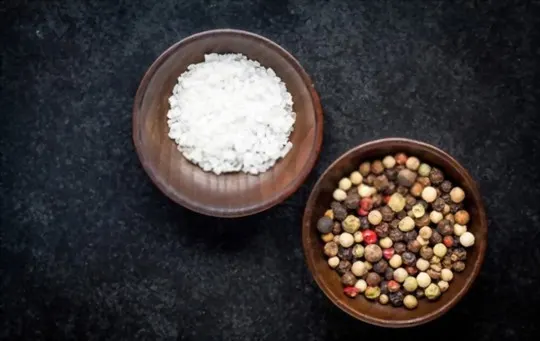
Cayenne pepper is a type of chilli pepper that has a bright red color, a pungent aroma, and can range in spiciness from mild to very hot.
Cayenne pepper salt is made by adding ground cayenne pepper to Kosher or sea salt.
This unique mixture can make for an interesting alternative to regular sea salt flakes, as it adds a “kick” of heat to dishes.
When using cayenne pepper salt as a substitution for sea salt flakes, you should use far less than the amount of regular sea salt flakes (usually 1/4 teaspoon per teaspoon of regular sea salt).
In addition, be sure to adjust the amount according to your own personal spice preference.
As cayenne pepper can also have varying degrees of spiciness, consider getting one that has a milder heat level if you’re looking for more subtle flavours.
Conclusion
In conclusion, there are many viable alternatives to sea salt flakes, each providing its own unique flavor profile.
If you’re looking for a less expensive and more robust alternative, then go with coarse kosher salt or flaked sea salt.
On the other hand, if you want a delicate and slightly saline taste, then consider fleur de sel or coarse Celtic sea salt.
Ultimately, it comes down to your own culinary preferences and the dish you are preparing.
Experiment with different salts until you find one that best suits your palate and kitchen needs.
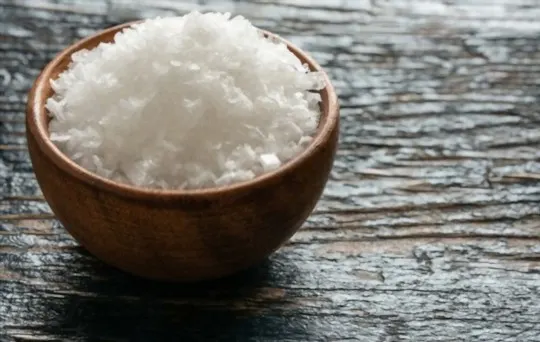
The 5 BEST Substitutes for Sea Salt Flakes
Ingredients
- 1 – Kosher Salt
- 2 – Himalayan Pink Salt
- 3 – Fleur de Sel
- 4 – Smoked Salt
- 5 – Cayenne Pepper Salt
Instructions
- Choose your preferred substitute from the list of options.
- Organize all of your ingredients.
- Use the proper substitute to cook your recipes.
